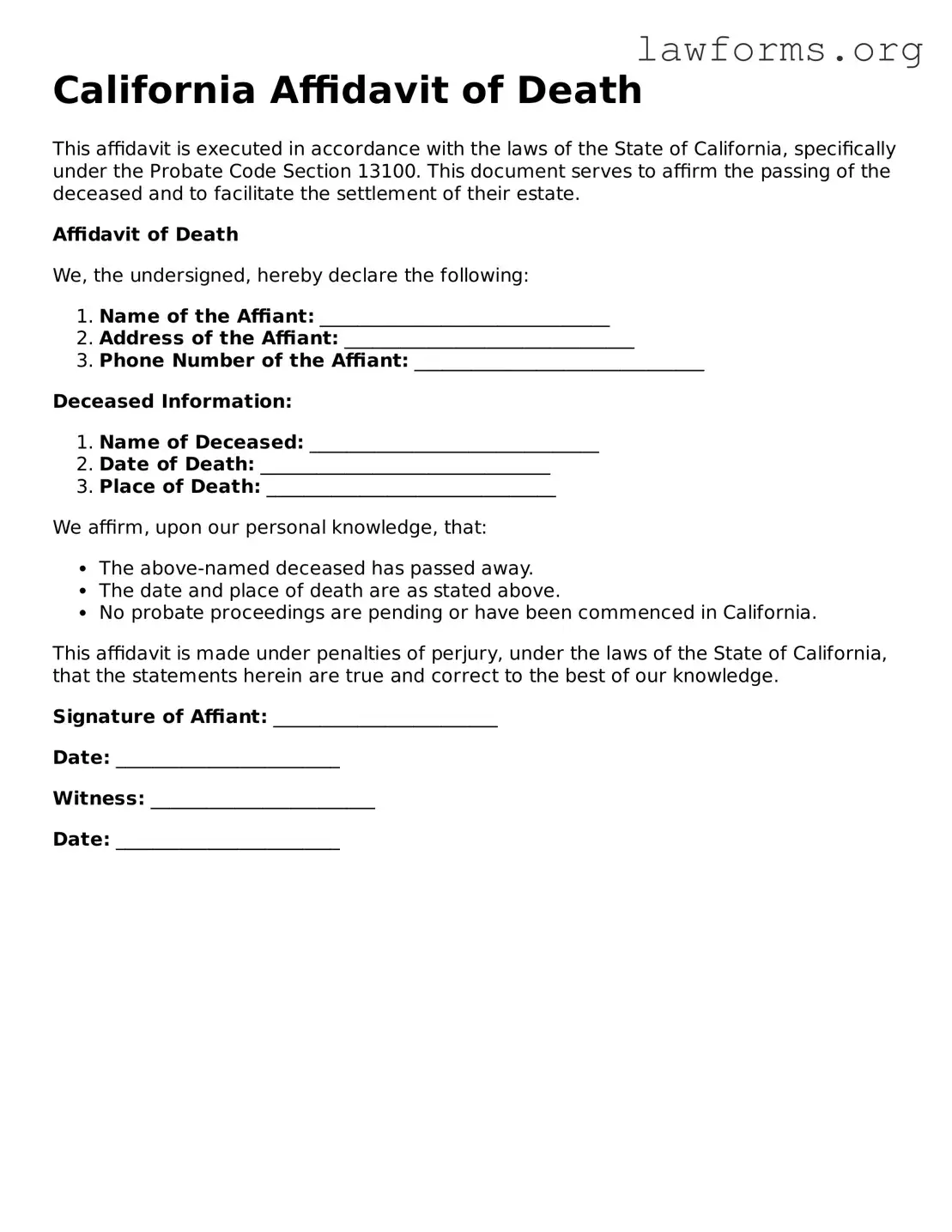California Affidavit of Death
This affidavit is executed in accordance with the laws of the State of California, specifically under the Probate Code Section 13100. This document serves to affirm the passing of the deceased and to facilitate the settlement of their estate.
Affidavit of Death
We, the undersigned, hereby declare the following:
- Name of the Affiant: _______________________________
- Address of the Affiant: _______________________________
- Phone Number of the Affiant: _______________________________
Deceased Information:
- Name of Deceased: _______________________________
- Date of Death: _______________________________
- Place of Death: _______________________________
We affirm, upon our personal knowledge, that:
- The above-named deceased has passed away.
- The date and place of death are as stated above.
- No probate proceedings are pending or have been commenced in California.
This affidavit is made under penalties of perjury, under the laws of the State of California, that the statements herein are true and correct to the best of our knowledge.
Signature of Affiant: ________________________
Date: ________________________
Witness: ________________________
Date: ________________________
